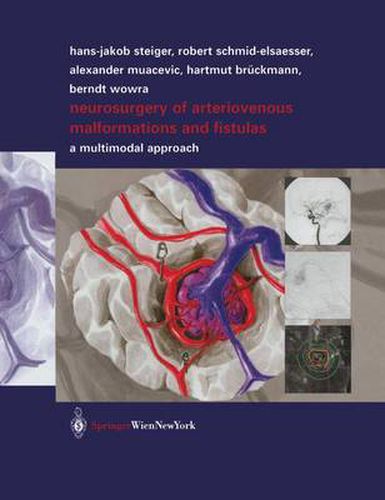Readings Newsletter
Become a Readings Member to make your shopping experience even easier.
Sign in or sign up for free!
You’re not far away from qualifying for FREE standard shipping within Australia
You’ve qualified for FREE standard shipping within Australia
The cart is loading…






Arteriovenous malformations (AVM) and fistulas (AVF) differ from all other pathology affecting the central nervous system by their high-flow arteriovenous shunts. Permanent occlusion of these shunts is the essence and the challenge of therapy. Much progress has been made since the first neurosurgical efforts to deal with these problems. Endovascular therapy and radiosurgery became accepted alternatives or adjuncts to surgery. In many instances the choice of the primary therapeutic modality is not clear and arguments can be found for several options. However, microsurgery, endovascular therapy and radiosurgery differ very much with regard to invasiveness, length of stay at the hospital but also residual risk after therapy. These secondary factors are often decisive for the choice of treatment modality. The book presents in a clearly structured way the modern treatment concepts. It has been written for all colleagues involved in surgery, radiosurgery and endovascular therapy of neurovascular malformations.
$9.00 standard shipping within Australia
FREE standard shipping within Australia for orders over $100.00
Express & International shipping calculated at checkout
Arteriovenous malformations (AVM) and fistulas (AVF) differ from all other pathology affecting the central nervous system by their high-flow arteriovenous shunts. Permanent occlusion of these shunts is the essence and the challenge of therapy. Much progress has been made since the first neurosurgical efforts to deal with these problems. Endovascular therapy and radiosurgery became accepted alternatives or adjuncts to surgery. In many instances the choice of the primary therapeutic modality is not clear and arguments can be found for several options. However, microsurgery, endovascular therapy and radiosurgery differ very much with regard to invasiveness, length of stay at the hospital but also residual risk after therapy. These secondary factors are often decisive for the choice of treatment modality. The book presents in a clearly structured way the modern treatment concepts. It has been written for all colleagues involved in surgery, radiosurgery and endovascular therapy of neurovascular malformations.